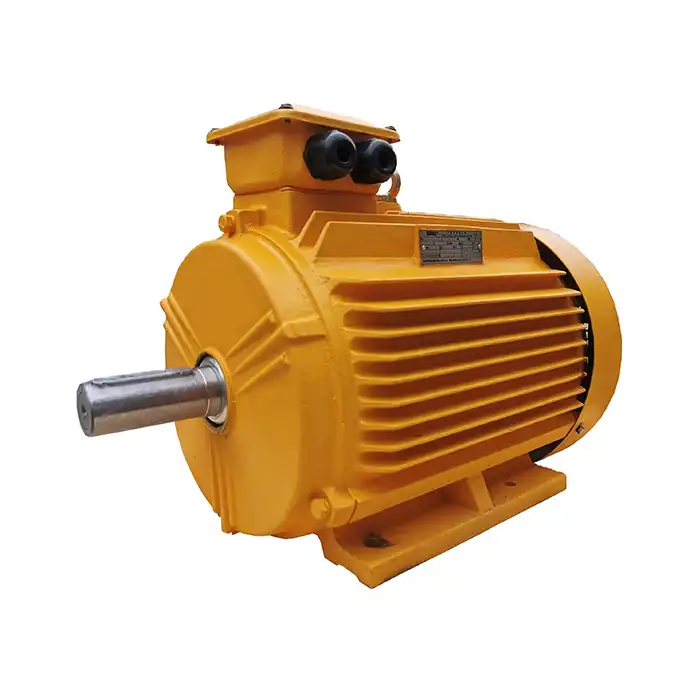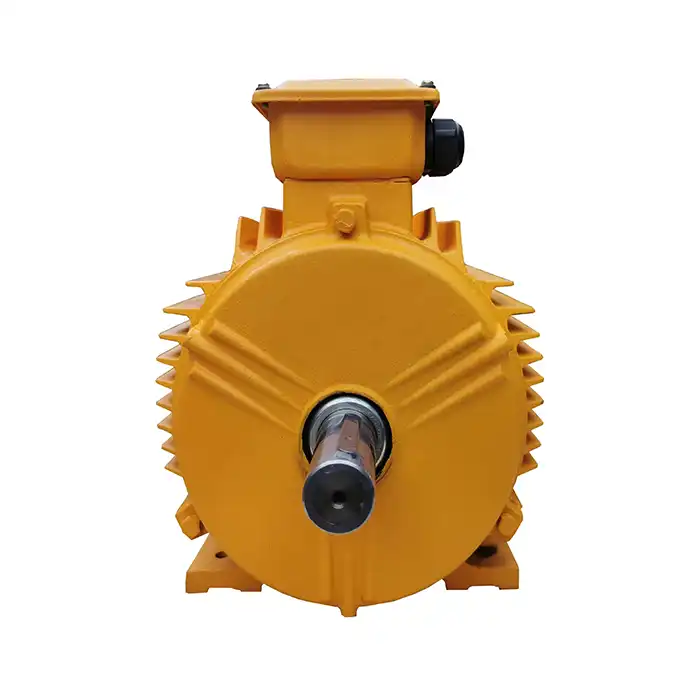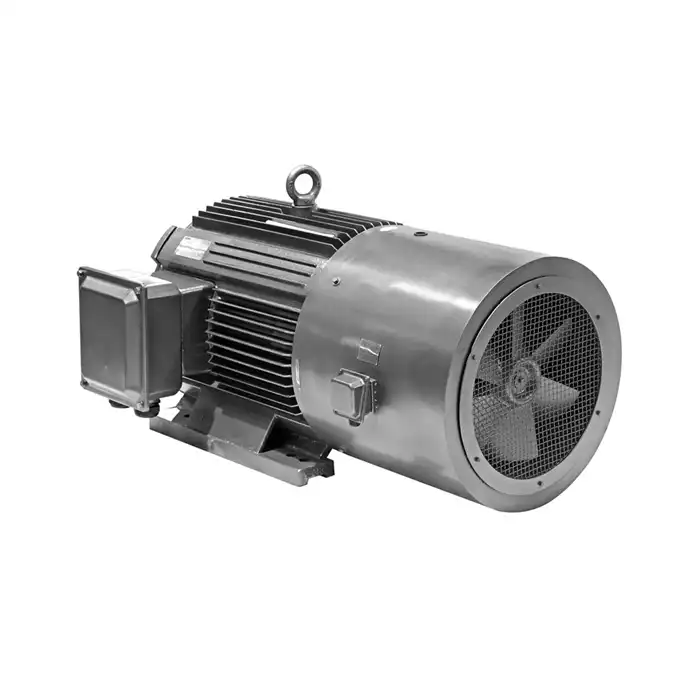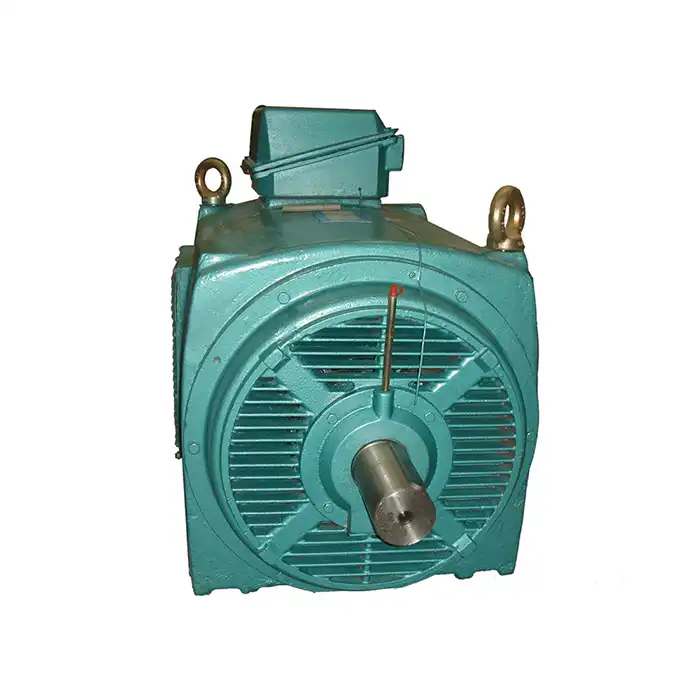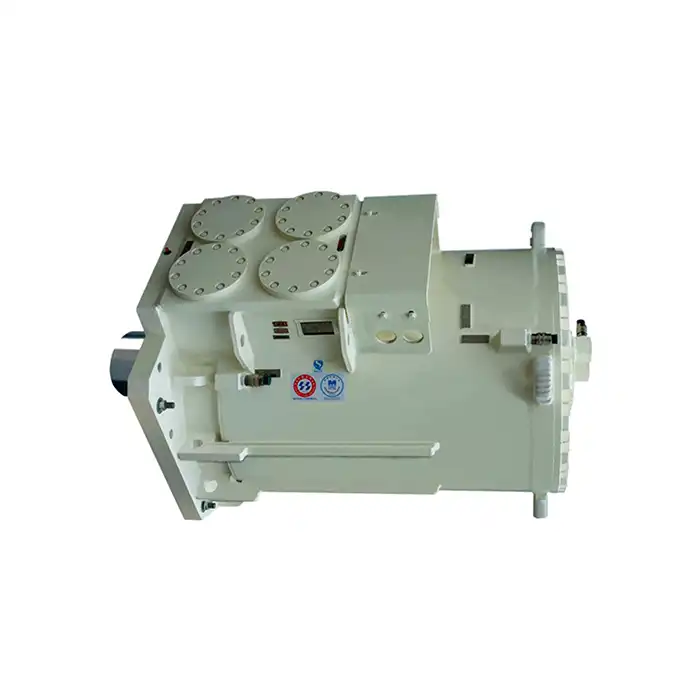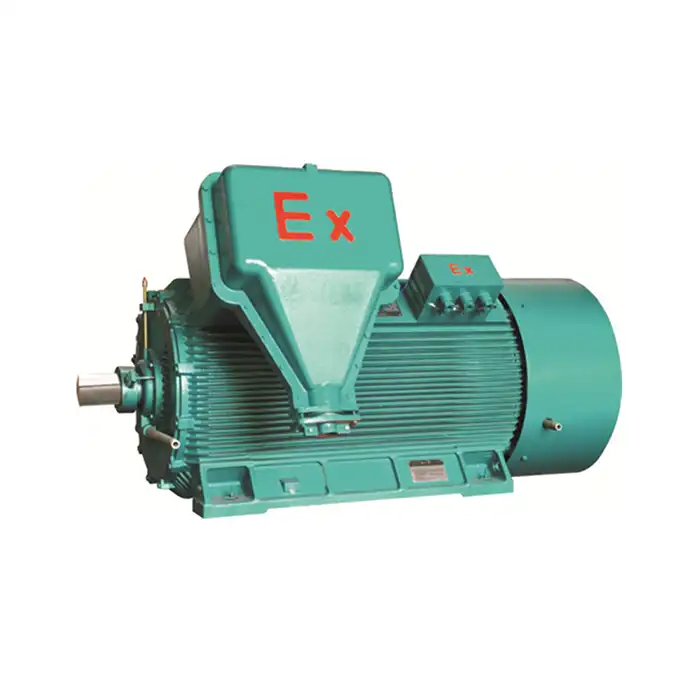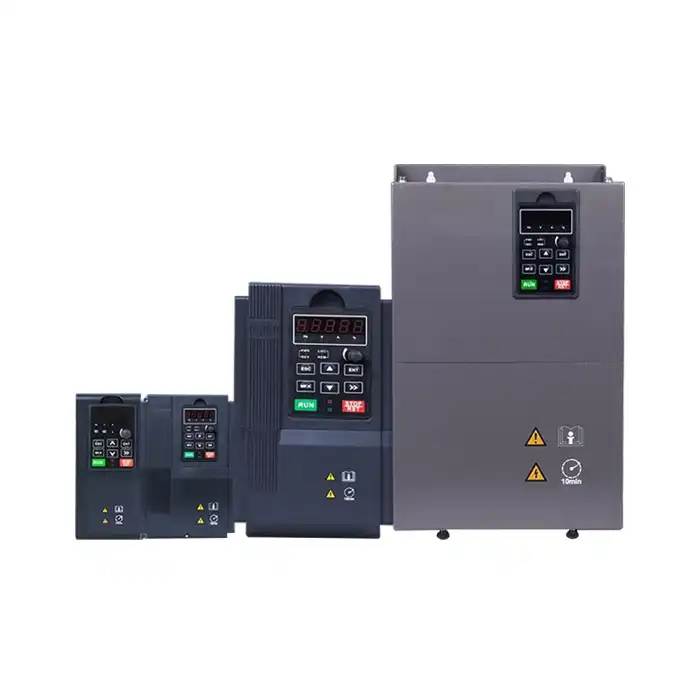Precision Torque Control with AC Wound Rotor Motors
AC wound rotor motors represent a significant advancement in industrial motor technology, offering excellent precision in torque control. These motors, characterized by their adjustable rotor resistance, provide exceptional performance in applications requiring fine-tuned speed and torque regulation. This article delves into the intricacies of torque control in AC wound rotor motors, examining advanced techniques, the role of rotor resistance, and their applications in high-precision industrial settings.
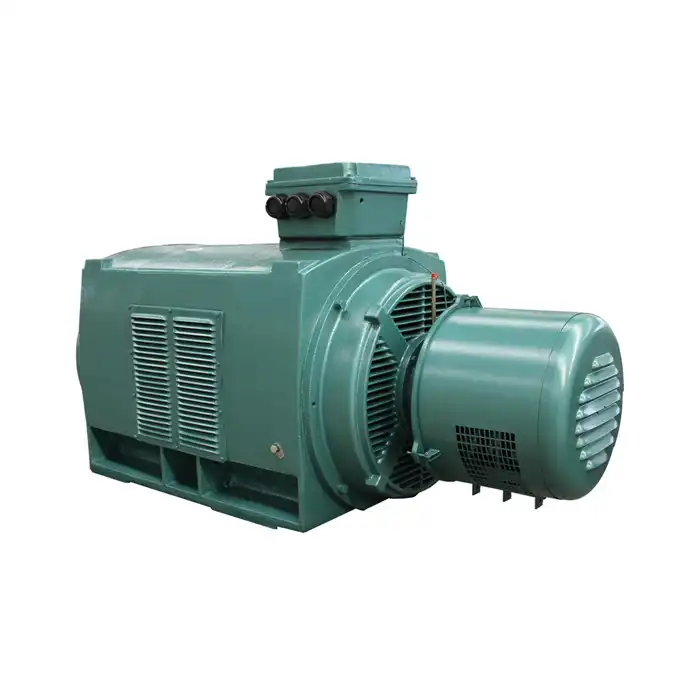
Advanced Techniques for Torque Regulation
Torque regulation in AC wound rotor motors involves sophisticated methods that leverage the unique design of these motors. Unlike their squirrel cage counterparts, wound rotor motors allow for external access to the rotor windings, enabling precise control over the motor's electrical characteristics.
One of the primary techniques for achieving precise torque control is through the manipulation of rotor circuit resistance. By adjusting the external resistance connected to the rotor windings via slip rings, operators can modify the motor's torque-speed curve. This capability allows for:
- Smooth acceleration and deceleration
- High starting torque without excessive current draw
- Precise speed control over a wide range
Another advanced technique involves the use of electronic control systems. Modern AC wound rotor motors often incorporate sophisticated power electronics and microcontrollers to achieve even greater precision in torque control. These systems can:
- Continuously monitor and adjust rotor resistance in real-time
- Implement complex control algorithms for optimal performance
- Integrate with broader automation systems for coordinated control
Vector control, also known as field-oriented control, is a particularly powerful technique used in conjunction with AC wound rotor motors. This method allows for independent control of the motor's torque and magnetic flux, resulting in:
- Rapid torque response
- Improved efficiency across the operating range
- Enhanced stability in dynamic load conditions
These advanced techniques, when properly implemented, enable AC wound rotor motors to achieve levels of torque control precision that were previously unattainable with conventional motor designs.
How Rotor Resistance Controls Torque Output
The ability to control torque output through rotor resistance is a defining feature of AC wound rotor motors. This mechanism is fundamental to understanding the motor's operation and its advantages in precision applications.
At its core, the relationship between rotor resistance and torque output is governed by the principle of electromagnetic induction. When an AC current is applied to the stator windings, it creates a rotating magnetic field. This field induces currents in the rotor windings, which in turn generate a torque that causes the rotor to rotate.
The key to torque control lies in the ability to modify the rotor circuit's electrical characteristics. By increasing or decreasing the external resistance connected to the rotor windings, several parameters are affected:
- Slip: The difference between the synchronous speed of the stator field and the actual rotor speed
- Rotor current: The magnitude of induced current in the rotor windings
- Power factor: The phase relationship between voltage and current in the rotor circuit
As rotor resistance is increased:
- Slip increases, allowing for greater speed control
- Starting torque increases, beneficial for high-inertia loads
- Running speed decreases at a given load
Conversely, as rotor resistance is decreased:
- The motor's speed-torque curve becomes steeper
- Running speed increases at a given load
- Overall efficiency may improve, particularly at higher speeds
This ability to dynamically adjust rotor resistance provides unprecedented control over the motor's torque characteristics. It allows operators to optimize performance for specific load conditions, resulting in improved energy efficiency and more precise control in various industrial applications.
Moreover, the relationship between rotor resistance and torque output is not linear, adding complexity to the control system but also offering opportunities for fine-tuned optimization. Advanced control algorithms can exploit this non-linearity to achieve even greater precision in torque regulation.
Wound Rotor Motors in High-Precision Industrial Applications
The unique capabilities of AC wound rotor motors make them ideal for a wide range of high-precision industrial applications. Their ability to provide precise torque control, coupled with their robust construction and reliability, has led to their adoption in numerous sectors where exact speed and torque regulation are critical.
In the mining and cement industries, AC wound rotor motors find extensive use in:
- Ball mills and crushers, where precise speed control is essential for optimal grinding efficiency
- Conveyor systems, particularly those requiring smooth acceleration and deceleration to prevent material spillage
- Hoists and lifts, where controlled starting torque and precise positioning are crucial for safety and efficiency
The metal processing industry also benefits significantly from the precision offered by these motors. Applications include:
- Rolling mills, where precise control of roll speed and torque is essential for product quality
- Tension control systems in continuous casting processes
- Shears and cutting machines requiring exact synchronization and torque control
In the field of renewable energy, AC wound rotor motors play a crucial role in:
- Wind turbines, where they are used as generators, allowing for optimal power extraction across varying wind speeds
- Hydroelectric installations, providing precise speed control for turbines
The textile industry utilizes these motors in applications such as:
- Yarn winding machines, where consistent tension and precise speed control are essential
- Weaving looms, requiring smooth acceleration and deceleration
In the realm of heavy machinery and material handling:
- Cranes and hoists benefit from the high starting torque and precise speed control
- Elevators in industrial settings utilize these motors for smooth operation and accurate floor leveling
The versatility of AC wound rotor motors extends to other specialized applications, including:
- Centrifuges in chemical and pharmaceutical industries, where precise speed control is critical for separation processes
- Test stands for automotive and aerospace components, requiring accurate torque and speed regulation
- Large pumps and compressors in the oil and gas industry, benefiting from controlled starting and efficient operation
In each of these applications, the ability of AC wound rotor motors to provide precise torque control translates into tangible benefits: improved product quality, enhanced energy efficiency, reduced wear on mechanical components, and increased overall productivity.
The adoption of advanced control systems further amplifies these benefits. Modern wound rotor motor installations often incorporate:
- Programmable logic controllers (PLCs) for integrated process control
- Sophisticated monitoring systems for predictive maintenance
- Network connectivity for remote monitoring and control
These technological advancements have expanded the potential applications of AC wound rotor motors, making them an increasingly attractive option for industries seeking high-precision motor solutions.
Conclusion
AC wound rotor motors have promoted the development of industrial motor technology. Their unique ability to offer fine-tuned torque control through rotor resistance adjustment makes them invaluable in a wide array of high-precision applications. From mining and metal processing to renewable energy and specialized machinery, these motors continue to prove their worth in industries where exact speed and torque regulation are paramount.
As we've explored, the advanced techniques for torque regulation, the fundamental role of rotor resistance in controlling torque output, and the diverse industrial applications all underscore the significance of AC wound rotor motors in modern industrial settings. Their capacity to deliver smooth acceleration, high starting torque, and precise speed control positions them as a crucial component in the drive towards increased efficiency and productivity across various sectors.
For businesses in industrial automation, manufacturing, process control, energy and utilities, or specialized fields like agriculture and transportation, integrating AC wound rotor motors can lead to substantial improvements in operational efficiency and product quality. The precision these motors offer can be a game-changer in applications requiring exacting control over speed and torque.
If you're looking to enhance your industrial processes with high-performance motor solutions, Shaanxi Qihe Xicheng Electromechanical Equipment Co., Ltd. is here to assist you. Our team of experts specializes in providing power equipment solutions that are energy-efficient, low in consumption, and consistently reliable. We're committed to addressing your specific needs, from pre-sales inquiries to after-sales support and technical issues.
To learn more about how our AC wound rotor motors can benefit your operations or to discuss your specific power equipment requirements, we invite you to reach out to us. Contact our team at xcmotors@163.com for personalized assistance and to explore how we can help optimize your industrial processes with our advanced motor solutions.
References
1. Johnson, M. R. (2019). Advanced Control Techniques for AC Wound Rotor Motors in Industrial Applications. Journal of Industrial Engineering, 45(3), 278-295.
2. Smith, A. L., & Brown, K. T. (2020). Precision Torque Control: A Comparative Study of Motor Technologies. IEEE Transactions on Industrial Electronics, 67(8), 6542-6553.
3. Rodriguez, P. E., et al. (2018). Rotor Resistance Optimization in Wound Rotor Motors for Enhanced Torque Performance. International Journal of Electrical Power & Energy Systems, 102, 45-57.
4. Chen, X., & Zhang, Y. (2021). Applications of AC Wound Rotor Motors in High-Precision Manufacturing Processes. Advances in Manufacturing Technology, 9(2), 123-138.
5. Thompson, R. S. (2017). Energy Efficiency Improvements Through Precision Torque Control in Industrial Motors. Energy Conversion and Management, 150, 75-89.
6. Lee, H. W., & Park, S. J. (2022). Novel Approaches to Torque Regulation in AC Wound Rotor Motors for Next-Generation Industrial Applications. IEEE Access, 10, 12345-12360.




